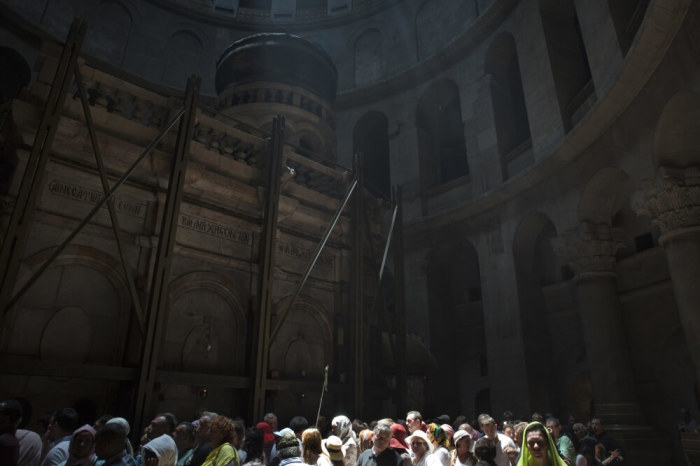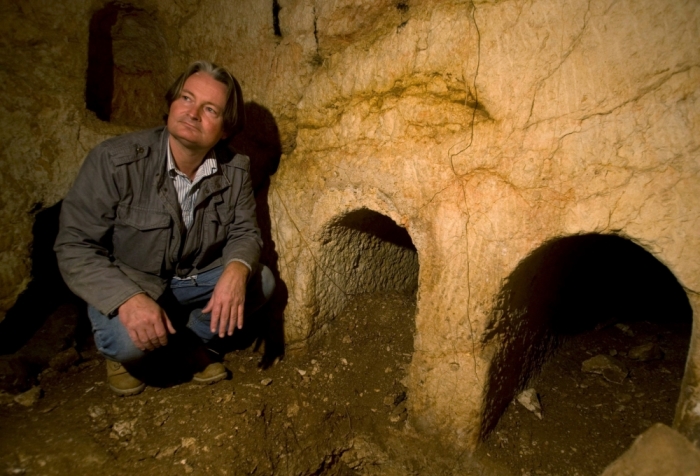Jesus Tomb Year-Long Restoration Project Begins

A year-long restoration project has officially begun on Jesus' tomb, located in the Church of Holy Sepulchre in Jerusalem.
The restoration project was spearheaded by the leaders of three religious denominations who all have some form of control over the site, which is believed to be where Jesus was crucified, buried, and resurrected, and is therefore a sacred place for many Christian.
This week, members from the Greek Orthodox, Roman Catholic and Armenian Orthodox churches gathered at the church to ceremoniously begin the intensive, $3.4 million project that will include peeling away layers of the tomb's outside, cleaning them and repairing them, one by one.
The church members agreed to restore the sacred Christian site earlier this year after the Israeli government warned it was at risk of collapsing after nearly two centuries of wear.
According to The Associated Press, the Greek-Orthodox Patriarch of Jerusalem, Theophilos III, said at the restoration ceremony this week that his denomination is "delivering what we promised" to the historical site.
Along with the three denominations contributing to the church's restoration, King Abdullah of Jordan also confirmed that he will be donating an undisclosed amount to the project.

When the King of Jordan announced his contribution earlier this year, Bishop William Shomali, the Latin Patriarchal Vicar in Jerusalem, called the decision "excellent news" that showed "the kindness of the king toward Christians and his constant concern to preserve the heritage of Christianity."
Theophilos III added at the time that the king's donation shows that the Christian and Muslim religions have the ability to be united.
"We are reaping the fruits of these efforts in this age when sectarian wars are burning entire countries as can plainly be seen," Theopolis III said at the time. "His majesty constantly reiterates that Jerusalem's Muslim and Christian holy sites are a red line, which Jordan will not permit to be crossed. Also, that Jordan continues to uphold its religious and historic responsibilities toward the entirety of Al Haram Al Sharif with the utmost commitment and seriousness."
The Church of the Holy Sepulchre has long been a place of contention among several Christian denominations which frequently disagree on who has control over the site.
As The New York Times reports, there have been past incidences of physical altercation between rivaling Christian groups who all seek to worship and visit the site.
The Rev. Athanasius Macora told the NY Times in April that restoration projects are frequently difficult to agree on because of the opposing Christian groups, many of whom believe that the denomination with the most ownership of the site should carry out the restoration project.
"One of the serious issues in the church is that the status quo takes place over every other consideration, and it's not a good thing," Macora said. "Unity is more important than a turf war."
While the Greek Orthodox Patriarch of Jerusalem has his headquarters at the Church of Holy Sepulchre, several religious groups share control of the site, including the Eastern Orthodoxy, Oriental Orthodoxy, and Roman Catholicism.





























